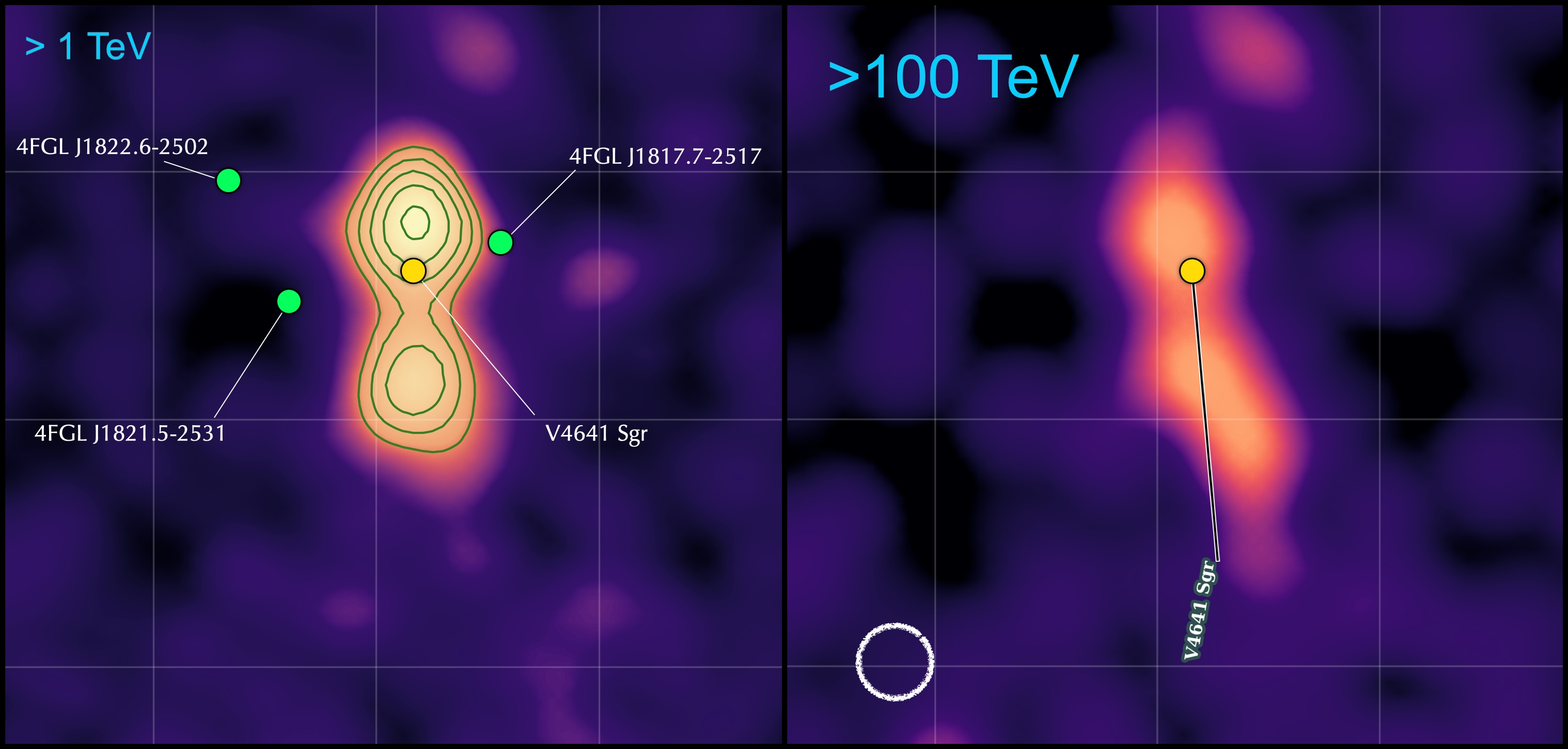
Photons from extremely high-energy gamma radiation were not only generated 'a long time ago in a galaxy far, far away', they are also created in microquasars in our Milky Way, shows research co-authored by scientists from the Institute of Nuclear Physics of the Polish Academy of Sciences. Could a revolution in the study of ultra-energetic cosmic radiation be brewing?
Dr. Sabrina Casanova, an astrophysicist from the Institute of Nuclear Physics at the Polish Academy of Sciences in Kraków, was one of the leading researchers in the study recently published in Nature.
There are sources of hellishly high-energy gamma radiation in the Universe. Photons with energies of several or even several hundred teraelectronvolts are generated there. 1 teraelectronvolt (TeV) is 1 trillion electronvolts (eV). For comparison, the energy of photons in visible light is a few electronvolts, and the record collision energy produced in the Large Hadron Collider was almost 14 TeV.
It was previously thought that photons with energies 'from hell' could be produced by quasars in the active nuclei of distant galaxies, and closer to us - only by remnants of supernova explosions. It now turns out that sources of such photons are also present in the Milky Way - they are produced by microquasars.
According to research described in Nature, the source of photons with energies exceeding 200 teraelectronvolts turned out to be the microquasar V4641 Sagittarii. It lies in the background of the constellation Sagittarius, at a distance of about 20,000 light years from Earth.
Such high energy is created there due to the presence of a black hole with a mass of about six solar masses, which pulls material from a star with three solar masses. The objects orbit around their common centre of mass, circling once every three days.
Processes in microquasars occur on a much more human-friendly time scale: within days, and not - as in the case of other sources of 'photons from hell' - hundreds of thousands or millions of years.
In addition, photons emitted by microquasars do not have to travel millions of light years of cosmic vacuum, where they can be scattered or absorbed.
All this means that astrophysicists have for the first time gained the ability to conduct comprehensive and practically undisturbed observations of processes that are crucial for the evolution of galaxies.
Researchers discovered the source of radiation as part of observations at HAWC (High-Altitude Water Cherenkov Gamma-Ray Observatory). The HAWC observatory is located on the slope of the Sierra Negra volcano in Mexico. The installation consists of 300 steel tanks filled with water. Each tank is hidden in a cylindrical structure 4 m high and about 7 m in diameter. The sensors look for flashes of light known as Cherenkov radiation in the water. It appears in the tank when a particle travelling faster than the speed of light in water enters it. HAWC typically records photons with energies ranging from tens of gigaelectronvolts to hundreds of teraelectronvolts.
The photons with the highest energies usually come from quasars, the active nuclei of some galaxies. The supermassive black holes (objects with huge masses, measured in hundreds of millions of solar masses) located in them accelerate and absorb material from the accretion disk surrounding them. During this process, very narrow and very long streams of matter, called jets, shoot out from the vicinity of the black hole's poles, in both directions along its rotation axis.
Things are different in the case of the recently discovered sources: microquasars. These are compact binary systems, made up of a massive star and a black hole absorbing its matter, which emits jets with lengths of hundreds of light years.
Several dozen such objects have already been discovered in our Galaxy alone.
'Photons emitted by microquasars have much less energy than those coming from quasars. We are usually talking about values of tens of gigaelectronvolts. Meanwhile, in the data recorded by the HAWC observatory detectors, we have noticed something downright improbable: photons coming from a microquasar located in our Galaxy, and yet carrying energies tens of thousands times greater than typical ones!' says Dr. Casanova who, together with Dr. Xiaojie Wang from Michigan Tech University and Dr. Dezhi Huang from the University of Maryland, was the first to observe the anomaly.

Interestingly, the jet emitted by the V4641 Sag system is directed towards the Solar System. In this configuration, the Earth observer has a relativistically distorted perception of the time of the matter at the beginning and end of the jet: its front begins to appear younger than it actually is. As a result, the jet seems to propagate in space at a speed faster than light.
'Importantly, the V4641 Sag microquasar turns out not to be unique. A second candidate for the source of extremely energetic photons is already known, a microquasar detected by the LHAASO observatory. It therefore seems likely that microquasars make a significant contribution to the highest-energy cosmic radiation produced in our Galaxy’, says Dr. Casanova.
The latest discovery is important not only for scientists dealing with cosmic radiation. According to the Institute of Nuclear Physics PAS, it proves that at a relatively small distance from Earth, analogous mechanisms of jet formation and production of ultra-energetic photons must be active as the ones in the cores of active, distant galaxies, scaling appropriately to the mass of the black hole.
The research was co-financed with a grant from the Polish National Science Centre.
PAP - Science in Poland
lt/ agt/ kap/
tr. RL













